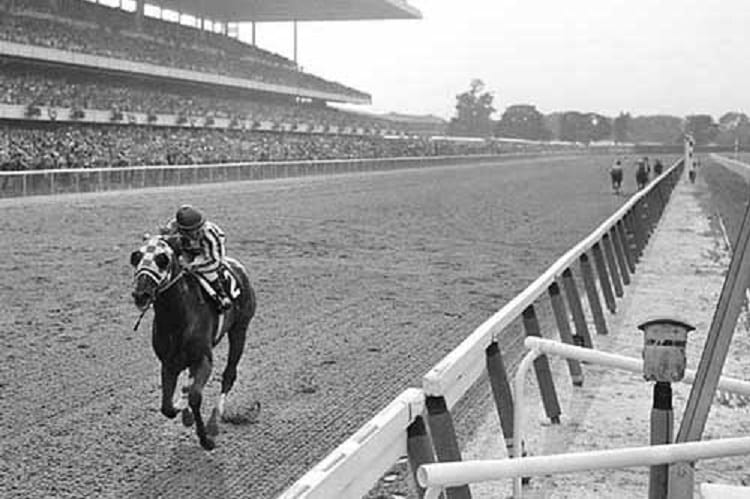
Jun 06, 2015 Consulting other lists of horse racing’s greatest, along with some guesswork and intuition, here is the L.A. Times’ ranking of the 11 horses that have won the Triple Crown. Advertisement 1. Jun 20, 2020 Tiz the Law won the Belmont Stakes, which replaced the Kentucky Derby as the first Triple Crown race because of the coronavirus pandemic 1 of 11 Tiz the Law (8), with jockey Manny Franco up.
The U.S. Triple Crown of Thoroughbred Racing (aka The Triple Crown) is the highest honor a race horse can attain. To win the Triple Crown a 3 year old horse must win all three legs or jewels in the series. The three races are The Kentucky Derby, The Preakness Stakes, and The Belmont Stakes.
In 1919 Sir Barton became the first racehorse to win all three races. A this point the term Triple Crown was not yet being used. 1948 Sir Barton was officially recognized as the first U.S. Triple Crown winner.
The phrase “Triple Crown” was used for the first time in 1930 after Gallant Fox won all three of these races. The term was coined by sportswriter Charles Hatton of the New York Times.
With Citation’s win in 1948, Eddie Arcaro became the only jockey to win two Triple Crowns. He got his first, seven years earlier, with his win in 1941 aboard Whirlaway.
In 1977 Seattle Slew became the first and so far only horse to win the Triple Crown while undefeated.
The last Triple Crown winner was Affirmed in 1978. The current Triple Crown drought is the longest ever beating the 25 year span from 1948 to 1973 when Secretariat won.
Sir Barton was the first horse to win the American Triple Crown; he accomplished this feat in 1919, while he was three. He was sired by leading stud Star Shoot. His grandsire was the 1893 English Triple Crown champion Isinglass. Sir Barton was a thoroughbred chestnut colt. He was bred in Kentucky by John E. Madden and Vivian A. Gooch at Hamburg Place Farm, Madden raced him in his two year old season. But he lost all six races he was entered in.
NBC Will Be Hosting A Virtual Kentucky Derby Featuring Triple Crown Winners
Then in 1918 Madden sold him to Canadian Naval Commander John Kenneth Levinson Ross for $10,000. Ross handed him over to trainer Harvey Guy Bedwell and jockey Johnny Loftus. Bedwell says Sir Barton was a nightmare to train because he would only extend himself against other horses. So, every morning he would bring a relay of horses to train Sir Barton. He was also had an unpleasant disposition, disliking people, horses, and other animals.
Jockey Tyler Gaffalione Is Becoming One Of Horseracing's All-Time Greats
At three he made his season debut in 1919 as a maiden in the Kentucky Derby. He was supposed to act as a rabbit for favored stable mate Billy Kelly. A rabbit is a speed horse that sets the pace in the beginning to tire out the opponents so another horse can come from behind and win. But Billy Kelly could not catch up as Sir Barton led the field of 12 horses from start to finish, and won by five lengths. Only four days later he won the Preakness Stakes and again led all the way. Shortly after he easily won the Belmont Stakes and set the American record for the fastest mile and 3/8ths race, which he did in 2:17 2/5. That win set him as the first horse to win the American Triple Crown.
In 1920 during his four year old season he only won five out of the twelve races he was entered in. But he set the world record for the 1 3/16 miles on dirt, winning the August 18, 1920 edition of the Merchants and Citizens Handicap. But one race many people remember is the October 12th race at Kenilworth Park in Windsor, Ontario. He lost by seven lengths because he was bothered by sore hooves on Kenilworths hard track. After that year he retired to stud.
Then in 1922 Ross sold Sir Barton to B. B. Jones who stood him at his Audley Farm in Berryville, Virginia until 1933. On October 30, 1937 he died of colic and was buried on a ranch in the foothills of the Laramie Mountains with a simple sandstone headstone. But later his remains were moved to Washington Park in Douglas, Wyoming where a memorial was erected in his honor.
Who Was The First Triple Crown Winner In Horse Racing
Sir Barton was named 1919 Horse of the Year among many other honors. He was also inducted into the National Museum of Racing and Hall of Fame in 1957. The Blood-Horse magazine ranked him number 49 in their top 100 USA thoroughbred champions of the 20 th century. In December 2006 a sculpture of Sir Barton was unveiled in front of Audley Farms Stallion Barn. And in Lexington, Kentucky he has a street named in his honor.